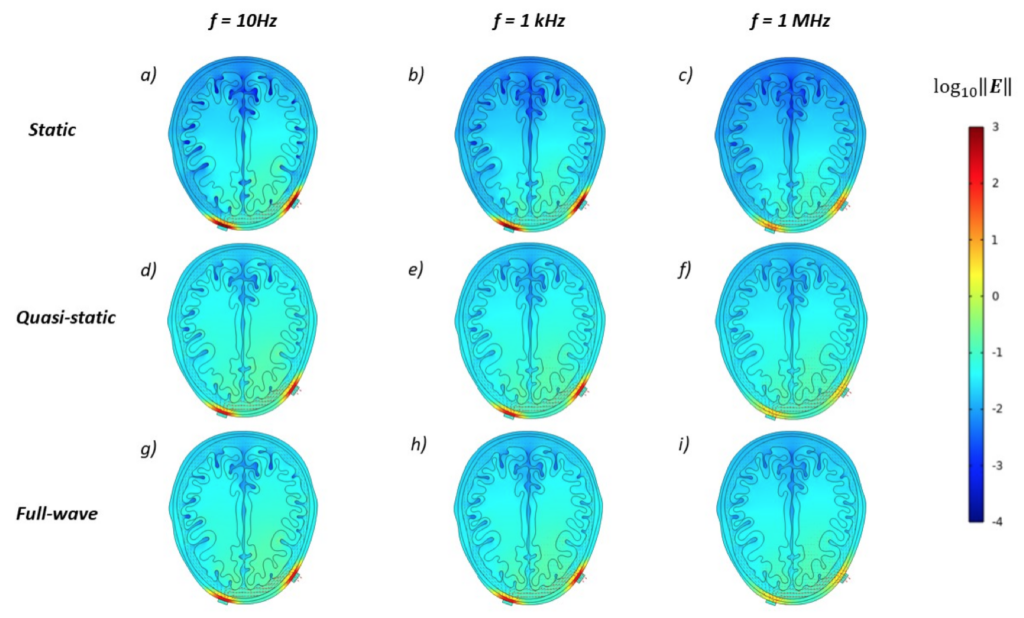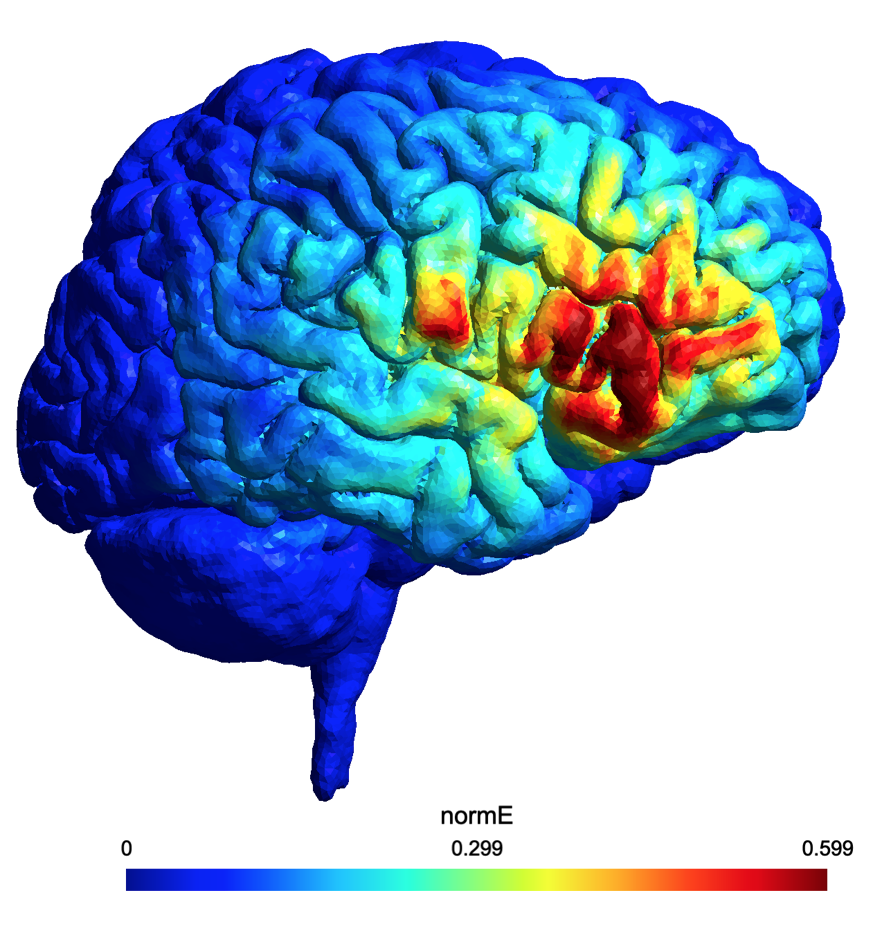In the first phase of the PKSTIM project, we have already provided several new results in the field of transcranial alternating current stimulation (tACS). First, we have provided new results regarding electric field dosimetry, at the level of all head tissues, following standard protocols of tACS, and notably the influence of geometrical parameters of the cortex (e.g., folding). Second, in order to study innovative tACS protocols using frequency ranges that remain relatively unexplored so far, we have been investigating the validity of approximations classicaly made in the field, namely the quasi-static approximation (QSA). It was indeed not well known how this convenient approximation, where it is assumed that the time variation of the electric and magnetic fields are sufficiently “slow” to approximate them by their steady-state value, holds at high frequencies (up to the MHz range). Third, we have designed a randomized, double-blind clinical study named “STIMPARK”, that INSERM has accepted to promote for ethics approval from a CPP. STIMPARK will study the potential therapeutic effect of tACS on specific cognitive functions in healthy volunteers and Parkinson’s disease patients, and on brain activity as monitored using high-resolution electroencephalography (HR-EEG).
Dosimetric evaluation of the electric field induced at the head level by tACS between 10 Hz and 1 MHz, to investigate the validity of the quasi-static approximation (QSA).
In the second phase of PKSTIM, we will continue to explore innovative tACS methods, based notably on unusual frequency bands, and also on physical principles that are new to the tACS field. Also, we will proceed to initiating HR-EEG recording during tACS and the completion of experimental tasks, as soon as ethics approval will have been obtained. Overall, we are confident to provide the community with an original approach on tACS, its mechanisms and potential therapeutic applications.
Electric field distribution induced by the identified optimal electrodes montage targeting the right inferior frontal gyrus, involved in the inhibition of action.



